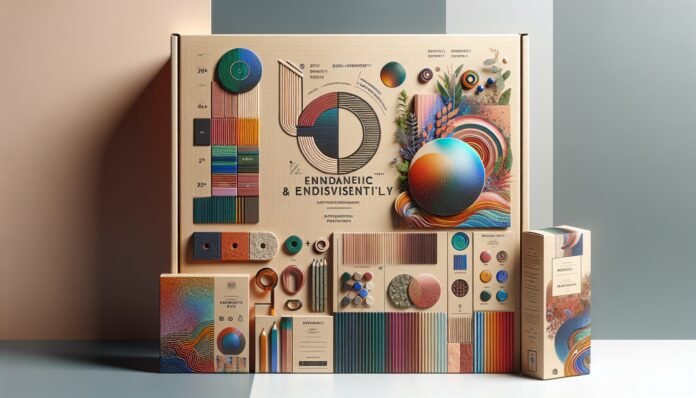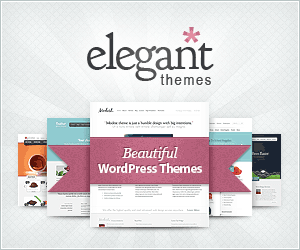Packaging design for brand identity is crucial, as 72% of consumers say that a product’s packaging influences their purchasing decisions. This post will explore how effective packaging design can enhance brand identity, making a product stand out on the crowded shelves. We’ll discuss key elements such as color, typography, and imagery that can strengthen brand perception and consumer loyalty. By understanding the role of packaging design, brands can create a powerful visual narrative that resonates with their target audience. Discover how the right packaging not only attracts attention but also communicates a brand’s core values effectively.
Understanding the Role of Packaging Design in Brand Identity
Packaging design plays a crucial role in shaping brand identity. It’s the first interaction a consumer has with a product, making its impact significant. Effective packaging can convey a brand’s story, values, and unique characteristics, making it an essential element in building brand recognition.
Importance of Visual Appeal in Packaging Design
Visual appeal is a key factor in packaging design, capturing consumer attention instantly. The aesthetics of a package can influence a buyer’s decision, acting as a silent salesperson on the shelf. Colors, shapes, and textures work together to create an eye-catching design that draws in potential customers.
Successful brands invest in visually appealing packaging because it differentiates their products from competitors. A well-designed package not only attracts attention but also encourages brand loyalty. When consumers are pleased with what they see, they are more likely to pick up the product and make a purchase.
- Bold colors can evoke strong emotions and leave a lasting impression.
- Unique shapes and textures create curiosity and intrigue.
- High-quality materials signal premium value and reliability.
Communicating Brand Values Through Packaging
Packaging serves as a communication tool that expresses brand values and missions. This aspect of design can effectively align with the consumer’s beliefs, fostering a deeper connection to the product. Elements like slogans, imagery, and material choice convey a company’s commitment to its values.
For instance, a brand emphasizing sustainability might use recycled materials, which resonates with eco-conscious consumers. Packaging also provides space to tell a story or highlight the brand’s heritage, which can build authenticity and trust. Consumers appreciate brands that align with their personal values, making this an essential aspect of packaging design.
Influence of Packaging on Consumer Perception
Consumer perception is heavily influenced by packaging design. It’s not just about what the product does but how it makes the consumer feel. A well-thought-out design can enhance the overall product experience, translating to a positive perception of the brand itself.
Packaging plays a psychological role by setting expectations for the product. If the packaging is premium, consumers may perceive the product as higher quality. On the other hand, poorly designed packaging can lead to doubts about the brand’s credibility. The right design fosters positive associations, encouraging repeat purchases and brand advocacy.
Key Elements of Effective Packaging Design
Effective packaging design is characterized by several essential elements that work together to attract and retain consumer interest. These components create a cohesive look that resonates with the target audience, ensuring the product stands out in a crowded marketplace.
Color Psychology in Branding and Packaging
Color psychology plays a significant role in branding and packaging. Colors can evoke emotions, influence perceptions, and drive purchasing decisions. Each color has its own set of associations that can complement a brand’s identity and message.
For example, blue is often associated with trust and tranquility, making it ideal for brands that want to convey reliability. Red, known for its attention-grabbing qualities, can evoke excitement and urgency. Marketers and designers carefully select colors to align with brand values and consumer expectations.
- Use of calming colors for health and wellness products.
- Bright, vibrant colors for products targeting children.
- Earth tones for brands emphasizing natural or organic ingredients.
Typography and Its Impact on Brand Recognition
Typography is more than just text; it’s a visual element that impacts brand recognition. The choice of font can convey a brand’s personality and tone, from modern and sleek to traditional and classic. Consistency in typography across packaging strengthens brand identity by making it easily recognizable.
Fonts should be legible and appropriate for the product category. A luxury brand might use an elegant serif font, while a tech company could opt for a clean, sans-serif typeface. Typography can influence how consumers perceive a brand, making it a critical component of packaging design.
Use of Imagery and Graphics to Enhance Brand Message
Imagery and graphics are powerful tools in packaging design. They can tell a brand’s story, highlight product features, and captivate the audience. Visual elements should align with the brand’s message and appeal to the target demographic.
Graphics can range from detailed illustrations to minimalist icons. They add depth to the packaging and create visual interest. When used effectively, imagery can enhance the brand message and leave a memorable impression on consumers.
Strategies to Align Packaging Design with Brand Identity
Aligning packaging design with brand identity involves strategic choices that reflect the brand’s values and mission. Consistency, sustainability, and personalization are key strategies that help build a strong connection between the brand and its audience.
Consistency in Packaging Across Product Lines
Consistency in packaging design ensures that all products under a brand share a unified visual identity. This approach strengthens brand recognition and makes it easier for consumers to identify products on the shelf. A cohesive design language provides clarity and reinforces the brand message.
Brands achieve consistency by maintaining similar color schemes, typography, and design elements across product lines. This strategy helps create a seamless brand experience and builds consumer trust. Consistent packaging acts as a visual anchor, tying together all products under the same brand umbrella.
Sustainable Packaging as a Reflection of Brand Ethics
Sustainable packaging reflects a brand’s commitment to environmental responsibility. With growing consumer awareness of ecological issues, brands that adopt eco-friendly packaging designs resonate with environmentally conscious audiences. This strategy aligns with modern ethical standards and enhances brand credibility.
Implementing sustainable practices can include using biodegradable materials, reducing packaging waste, or opting for recyclable options. This not only reduces environmental impact but also supports the brand’s narrative of caring for the planet. Emphasizing sustainability in packaging design can strengthen brand identity and attract like-minded consumers.
Personalization and Customization to Strengthen Brand Connection
Personalization and customization in packaging design create deeper connections with consumers. Tailoring packaging to individual preferences or incorporating personalized elements enhances the consumer experience and fosters brand loyalty.
Brands can achieve this through customizable packaging options, such as adding names, personalized messages, or bespoke designs. This approach makes consumers feel valued and understood, reinforcing their connection to the brand. Personalized packaging becomes a memorable touchpoint that differentiates the brand from competitors, making it a powerful strategy in building brand identity.
Conclusion
Packaging design plays a crucial role in reinforcing brand identity and differentiating a product from competitors. Effective packaging design utilizes color, typography, and imagery to convey brand values and appeal to target consumers. Consistency in packaging design across products helps build brand recognition and consumer trust. Innovative packaging can enhance user experience and make products more memorable. Sustainable packaging solutions are increasingly important as consumers prioritize environmental responsibility.
FAQ
How does packaging design influence brand identity?
Packaging design serves as the face of the brand, communicating its values and essence to consumers. It shapes first impressions and helps distinguish the brand in a crowded market. Effective design reinforces brand identity, making it instantly recognizable and memorable.
What are the key elements of effective packaging design for brand identity?
Key elements include color, typography, imagery, and material choice. These elements should align with the brand’s message and target audience. Consistency in these areas helps strengthen brand identity and ensures that the packaging resonates with consumers.
Why is cohesive packaging design important for brand recognition?
Cohesive design ensures all products from a brand share a unified look, enhancing brand recognition. It builds trust and familiarity among consumers, encouraging repeat purchases. Consistency across packaging fosters a strong brand presence in the market.
How can packaging design impact consumer purchasing decisions?
Packaging design can influence consumer perception and decisions through visual appeal and functionality. Eye-catching designs attract attention, while clear information and usability can convince consumers to choose one product over another. Effective design creates an emotional connection, influencing buying behavior.
What role does color play in packaging design for brand identity?
Color plays a vital role in conveying emotion and creating connections with consumers. Different colors evoke different feelings and associations, impacting how the brand is perceived. Choosing colors that align with brand values can strengthen identity and recognition.
How can sustainable packaging design enhance a brand’s identity?
Sustainable packaging design reflects a brand’s commitment to environmental responsibility. It appeals to eco-conscious consumers and aligns with modern values. Using sustainable materials and practices can enhance brand reputation and attract a broader audience, boosting identity and loyalty.




